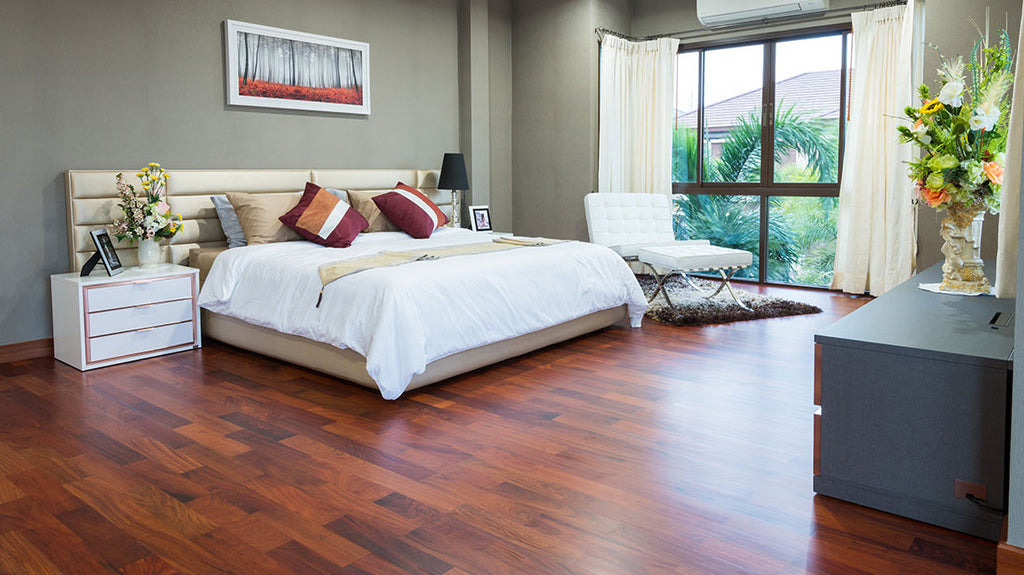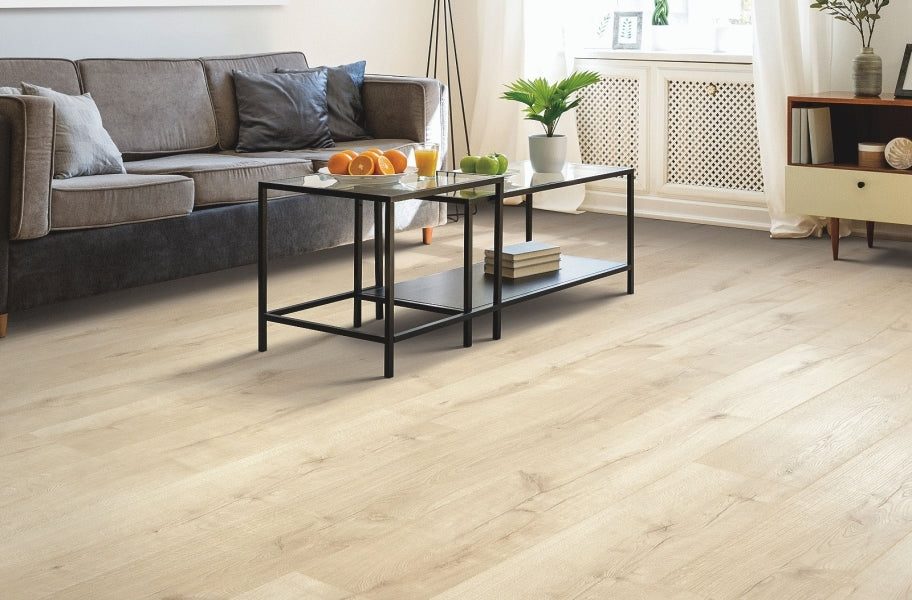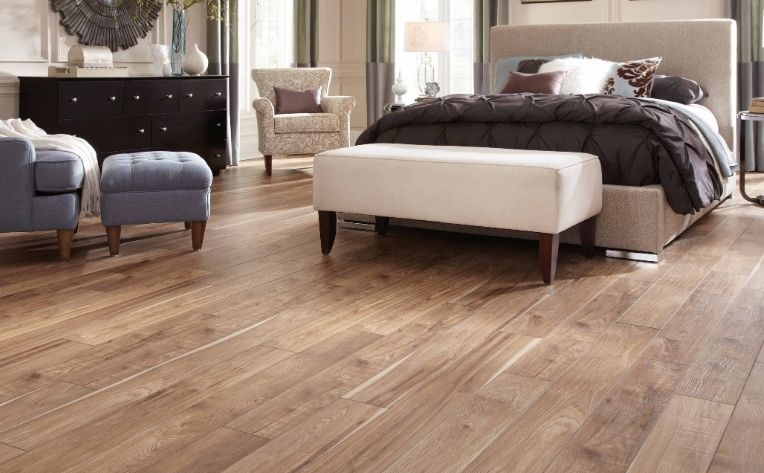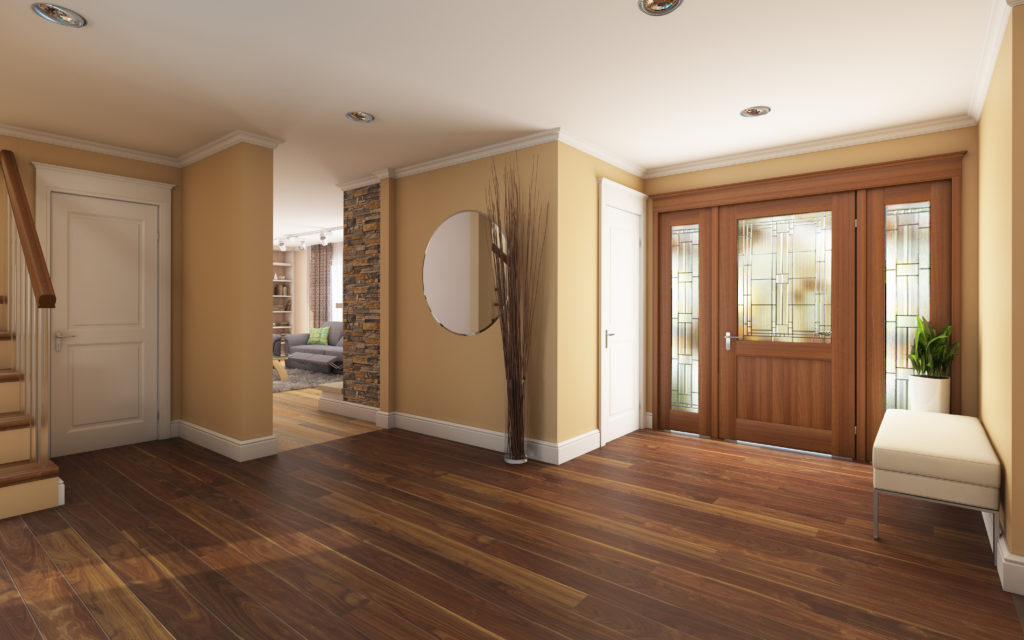When it comes to transforming the ambiance of your home with the timeless elegance of hardwood floors, the cost can often present a significant hurdle. However, there's a fantastic alternative that offers the same allure without breaking the bank: laminate flooring. A remarkable innovation in flooring, laminate has revolutionized the industry by providing the luxurious look of hardwood at a fraction of the cost. In this guide, discover how laminate flooring seamlessly combines elegance and affordability, enabling you to achieve the aesthetic appeal you desire for your home.

The Appeal of Laminate Flooring:
Laminate flooring is a budget-friendly yet sophisticated flooring option that mirrors the natural beauty of hardwood. What sets laminate apart is its ability to authentically replicate the appearance of various wood species, grains, and textures. Thanks to advanced printing technology and embossing techniques, laminate achieves stunning realism, making it difficult to distinguish from genuine hardwood at first glance.
Cost-Effective Elegance:
One of the most enticing aspects of laminate flooring is its affordability. Compared to hardwood, laminate is significantly more cost-effective both in terms of material and installation costs. It allows homeowners to achieve the luxurious look of hardwood without exceeding their budget, making it an ideal choice for those looking to elevate their home's aesthetic appeal while being mindful of expenses.
Versatility in Design and Style:
Laminate flooring offers an extensive array of design options, providing homeowners with the freedom to choose from various wood species, colors, finishes, and plank sizes. Whether you desire the warmth of oak, the richness of cherry, or the classic charm of maple, there's a laminate option that suits your style preferences and complements your home's décor seamlessly.
Durability and Easy Maintenance:
Beyond its aesthetic appeal and affordability, laminate flooring boasts exceptional durability. Its scratch-resistant and wear-resistant surface makes it an excellent choice for high-traffic areas and homes with pets and children. Furthermore, laminate requires minimal maintenance – regular sweeping and occasional mopping are sufficient to keep it looking pristine, unlike the periodic refinishing required for hardwood.
What Is Laminate Flooring, And How Does It Differ From Hardwood Flooring?

Laminate flooring and hardwood flooring are two distinct types of flooring materials, each with its own characteristics and composition.
Laminate Flooring:
Laminate flooring is a versatile, cost-effective flooring option engineered to replicate the appearance of hardwood, stone, or tile. It typically consists of several layers that are fused together through a lamination process:
- Wear Layer: The top layer of laminate flooring is a durable, transparent wear layer that protects the surface from scratches, stains, and fading. It often includes a protective coating made from aluminum oxide or melamine.
- Decorative Layer: Beneath the wear layer is the decorative layer, which features a high-resolution photograph or print of wood grain, stone, or tile design. Advanced printing technology creates realistic patterns that mimic the look of natural materials.
- Core Layer: The core layer comprises a high-density fiberboard (HDF) or medium-density fiberboard (MDF), providing stability and strength to the flooring. This layer is moisture-resistant and helps maintain the shape of the laminate plank.
- Backing Layer: The bottom layer, also called the backing layer, provides additional stability and moisture resistance.
Hardwood Flooring:
Hardwood flooring, on the other hand, is crafted from solid wood or engineered wood layers, offering an authentic and natural flooring option:
- Solid Hardwood: Solid hardwood flooring consists of individual planks cut from a single piece of wood, such as oak, maple, cherry, or walnut. Each plank is milled with tongue-and-groove edges for installation.
- Engineered Hardwood: Engineered hardwood comprises multiple layers. The top layer is a real wood veneer, while the core layers are constructed from plywood or high-density fiberboard. This construction enhances stability and minimizes the effects of expansion and contraction due to changes in humidity.
How Does The Installation Process Of Laminate Flooring Differ From Hardwood?

The installation processes for laminate flooring and hardwood differ significantly due to their distinct construction and installation methods:
Laminate Flooring Installation:
- Floating Floor Installation: Laminate flooring is commonly installed as a "floating floor," meaning the individual planks are not directly attached to the subfloor. Instead, they interlock with each other using a click-and-lock or tongue-and-groove system. No glue or nails are typically used in the installation process.
- Underlayment: Before laying the laminate planks, an underlayment is often placed over the subfloor. This underlayment acts as a moisture barrier and cushioning layer, enhancing the floor's stability and noise reduction.
- Cutting and Fitting: Laminate planks are easily cut to size using a saw, allowing for precise fitting around walls, doorways, or other obstacles. The planks can be laid in various patterns or directions to achieve the desired aesthetic.
- Quick Installation: The installation of laminate flooring is often faster compared to hardwood. The floating floor method allows for a relatively straightforward installation process, making it suitable for DIY enthusiasts.
- No Acclimation Needed: Unlike hardwood, laminate flooring typically doesn't require acclimation to the room's humidity and temperature before installation.
Hardwood Flooring Installation:
- Nailing or Gluing: Solid hardwood flooring is typically nailed or stapled directly to the subfloor. Engineered hardwood can be either nailed, stapled, glued down, or installed using a floating method, depending on the manufacturer's recommendations and the type of subfloor.
- Subfloor Preparation: Subfloor preparation is crucial for hardwood installation. It needs to be clean, flat, dry, and structurally sound before the installation process begins.
- Moisture Control: Moisture control is essential for hardwood installation to prevent cupping, warping, or buckling. Acclimation of the hardwood to the room's environment before installation is often necessary.
- Professional Installation: Hardwood flooring installation usually requires professional expertise, especially for solid hardwood, to ensure proper subfloor preparation, nail-down procedures, and finishing details.
In summary, while laminate flooring installation is often considered more straightforward and suitable for DIY projects due to its floating floor method, hardwood flooring installation involves more preparation, and varied installation methods, and often requires professional expertise to ensure proper installation and finishing.
Final Thoughts On Getting the Look of Hardwood with Laminate Flooring

Laminate flooring is a testament to the perfect harmony between affordability and elegance. Its ability to mimic the natural beauty of hardwood while offering durability, versatility, and easy maintenance makes it a compelling choice for homeowners seeking a sophisticated look without the hefty price tag. Embrace the allure of hardwood floors without compromising your budget by opting for laminate – a budget-friendly flooring solution that delivers elegance and charm to your living space.
Flooring blog articles you may want to read:
The Benefits of Laminate Flooring: Superior to Other Flooring Options?
Flooring For A Modern And Minimalist Look
